Manuel Will | John E. Parkington | Andrew W. Kandel | Nicholas J. Conard
Journal of Human Evolution
Source - http://www.sciencedirect.com/science/article/pii/S0047248413000924
Abstract
New excavations at the Middle Stone Age (MSA) open-air site of Hoedjiespunt 1 (HDP1) on the west coast of South Africa advance our understanding of the evolution of coastal adaptations in Homo sapiens. The archaeological site of HDP1 dates to the last interglacial and consists of three phases of occupation, each containing abundant lithic artifacts, shellfish, terrestrial fauna, ostrich eggshell and pieces of ground ocher. The site provides an excellent case study to analyze human behavioral adaptations linked to early exploitation of marine resources.
Here we reconstruct human activities through a detailed study of the lithic assemblages, combining analyses of the reduction sequences, artifact attributes and quartz fracturing. These methods provide insights into raw material procurement, lithic reduction sequences, site use and mobility patterns, and foster comparison with other MSA coastal sites.
The main characteristics of the lithic assemblages remain constant throughout the use of the site. Quartz dominates silcrete and other raw materials by almost four to one. Knappers at HDP1 produced different forms of flakes using multiple core reduction methods. Denticulates represent the most frequent tool type. The assemblages document complete, bipolar and hard hammer reduction sequences for the locally available quartz, but highly truncated reduction sequences with many isolated end products for silcrete, a material with a minimum transport distance of 10–30 km. This observation suggests that well provisioned individuals executed planned movements to the shoreline to exploit shellfish. Our excavations at HDP1 furthermore demonstrate the simultaneous occurrence of flexible raw material use, anticipated long-distance transport, systematic gathering of shellfish and use of ground ocher. The HDP1 lithic assemblages document a robust pattern of land-use that we interpret as a stable adaptation of modern humans to coastal landscapes as early as MIS 5e.
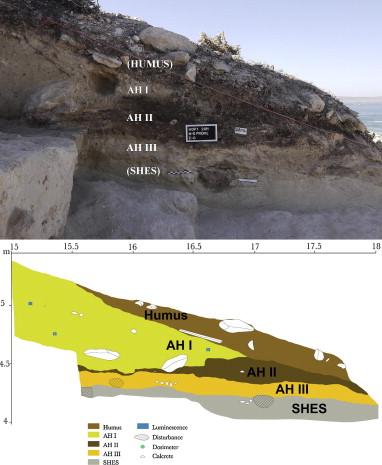
Figure 2. North–south profile along the East = 0 m line showing HUMUS = modern top soil, AH I–III = three main archaeological horizons and SHES = shelly sand (Photo: N.J. Conard; Section: S. Rudolph).

Figure 3. Illustration showing variability of raw materials in the lithic assemblages of HDP1: Quartz (Q), silcrete (S), quartz porphyry (QP), as well as other materials including granite (GR), greywacke (GW) and chert (CH) (Photo: C. Hahndiek).
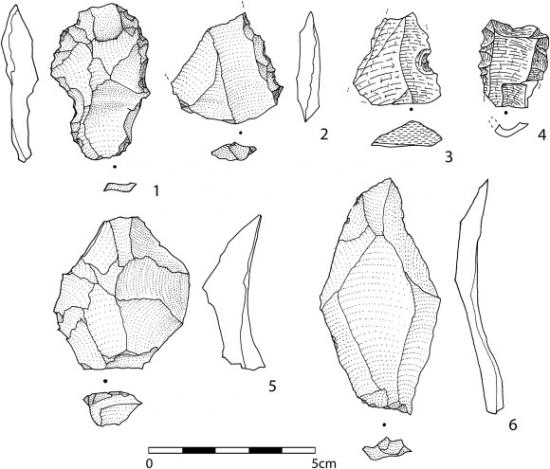
Figure 4. Artifacts from AH I: 1) M11–229, silcrete, denticulate; 2) L11–30.1, silcrete, denticulate; 3) 9006.9, quartz, notch; 4) M11–251.1, quartz, side scraper/denticulate; 5) K11-16, silcrete, unmodified flake; 6) M12–225, silcrete, unmodified flake (Illustration: F. Brodbeck).
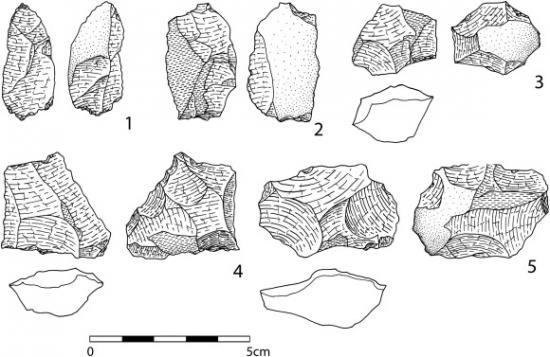
Figure 5. Cores from AH II: 1) M13–460, quartz, bipolar core; 2) M13–256, quartz, bipolar core; 3) M12–40, quartz, inclined core; 4) M12–115, quartz, parallel core; 5) N13–30, quartz, inclined core (Illustration: F. Brodbeck).
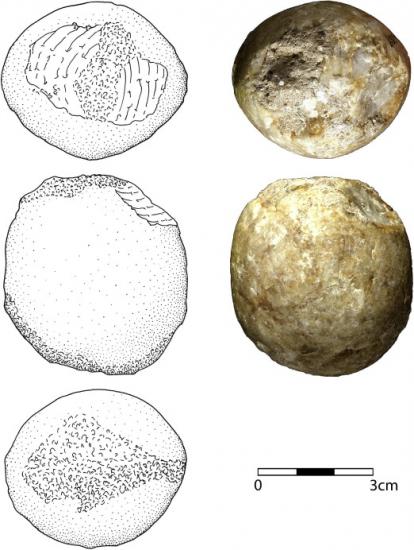
Figure 6. Hammerstone made on a quartz pebble (M12–289) from AH II as illustration (left side) and photograph (right side) (Illustration: F. Brodbeck; Photo: C. Hahndiek).
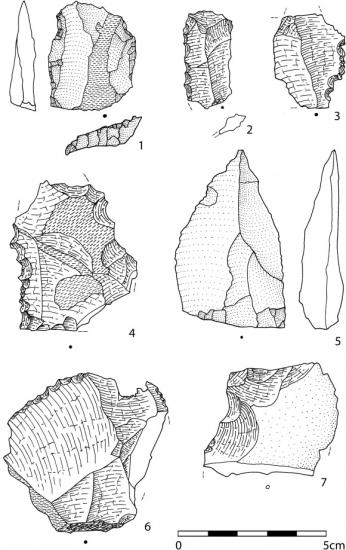
Figure 7. Retouched pieces and flakes from AH II: 1) M12–319, silcrete, retouched flake; 2) M13–429, quartz, laterally retouched blade; 3) M12–15, quartz, denticulate; 4) M13–321, quartz, double denticulate; 5) N13–41, quartzite, unretouched point; 6) M13–237, quartz, transverse scraper; 7) M12–6, quartz, notch (Illustration: F. Brodbeck).
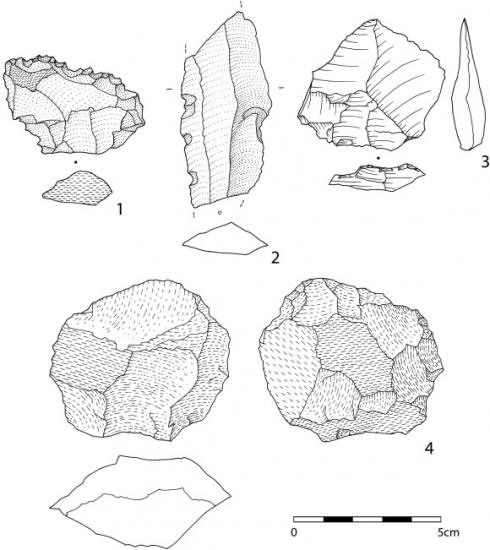
Figure 8. Artifacts from AH III: 1) 6537, silcrete, denticulate; 2) L12–397, silcrete, denticulate; 3) L12–96, hornfels, unmodified flake; 4) L12–337, quartz porphyry, inclined core (Illustration: F. Brodbeck).